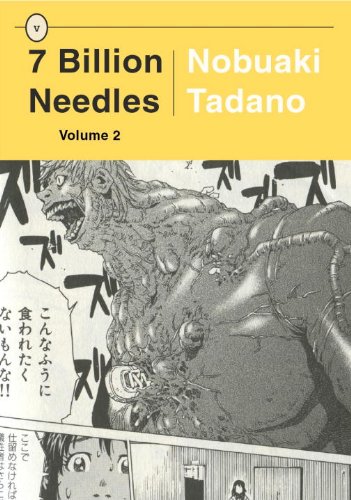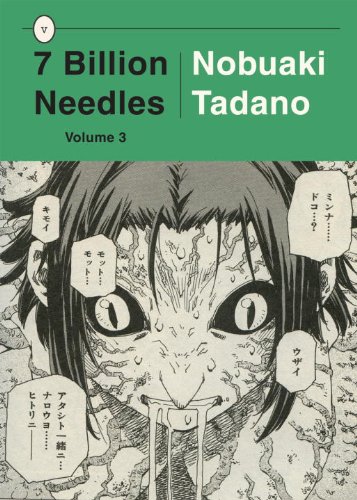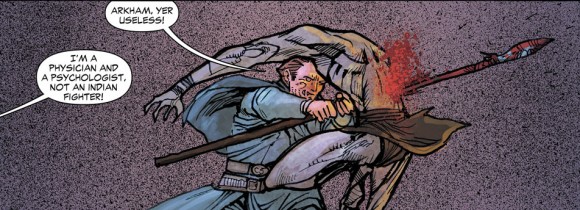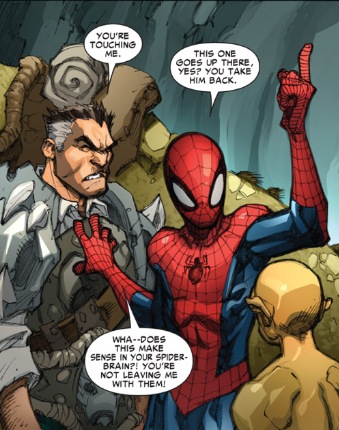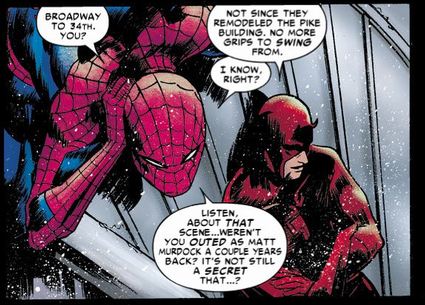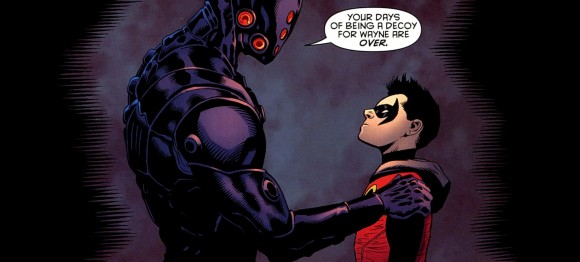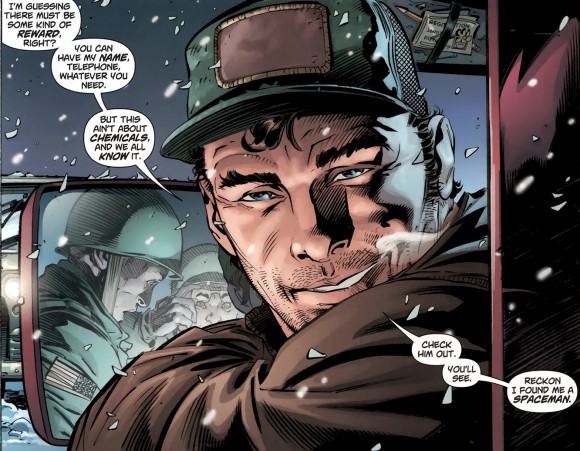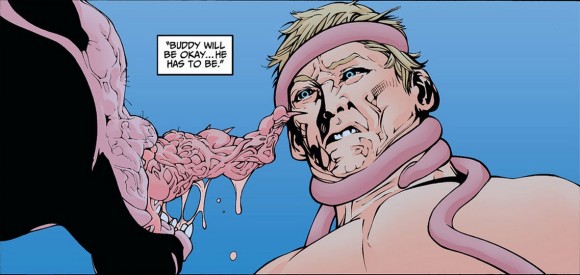
Best Example of Industry Rule 4080, 2011: The Jack Kirby Lawsuit
February 3rd, 2012 Posted by david brothersThe Jack Kirby case broke me, in a way. This is as good a round-up as you’ll find online. You should read it, because Tom Spurgeon is very good at his job. The short version is basically that, according to the law, Jack Kirby created all those characters and drew all those pages for Marvel under a work-for-hire contract, and therefore has no stake in the ownership of the characters he co-created or created wholesale.
Reading up on this case made me realize that a significant portion of the comics industry is built on exploitation. The law agrees with Marvel, but Marvel is the company that put language on their paychecks that forced you to relinquish ownership before you could get paid. Your choice, after completing the job, was either play ball or starve, which isn’t really a choice at all, near as I can tell. They’re the company that claimed ownership over the original art their artists created, preventing them from selling that art on the secondary market to supplement their income. (I’d heard that they lost a significant amount of that original art in a flood in the ’80s, and several of my smarter friends have, but I couldn’t find corroboration online, so maybe it’s fake, I dunno.) They’re the company that stitched Steve Ditko and Jack Kirby out and penciled in “Stan Lee Presents.” Kirby might have signed a bad contract or whatever, but he was working with snakes.
I believe that Kirby deserves the ownership he was cheated out of, and his heirs deserve his cut of what he should have earned. I feel like if you do a job for me, and you help make me a success, I owe you. I owe you big, and I should do my level best to reward you for that. Maybe that’s how I was raised. But I think that’s a healthier way to do business than leaving scorched earth behind every interaction you have with your talent.
I think Marvel should have made a deal for profit-sharing or whatever a long time ago. I think that right now, Marvel has the prestige and cash to make that happen, but the law is on their side and the accountants would never allow it, no matter how much the men and women who do the actual work at Marvel might want to. Maybe that’s irony, I dunno.
This story, and the story of the Siegel & Shuster lawsuits against DC Comics/Time Warner, rubbed me the wrong way. It makes the ugliness beneath the spandex plain. It draws all of these shadows that I was comfortable ignoring into the light. It forces me to make a choice: how strong are my morals? How much do I believe in right and wrong?
I still don’t have an answer. The hardline, no compromises side of morality says that I should wash my hands of both companies behind their history. I’ve done it in minor ways. I’m not reading Action Comics because I think it’s gross that Grant Morrison didn’t live up to the picture he painted of himself that I bought into. He went from counter-culture icon speaking at Disinfo to the guy mocking Sandman fans and just saying that Siegel and Shuster signed a contract. I’m not reading any of Jonathan Hickman’s Fantastic Four or FF, either. I get the reasoning behind the little dedications to Stan & Jack in each issue, but that’s just a reminder that, hey, Marvel wouldn’t exist without this guy (or Romita or Ditko or Buscema or Lee) and they refuse to credit him with that fact. But if the comics were better, if it were the Grant Morrison who blew my mind with Flex Mentallo instead of whoever it is writing Action Comics, would I stick to the courage of my convictions?
I like the Hulk. He’s a Lee/Kirby co-creation. Jeff Parker’s Hulk is one of Marvel’s best comics, month-in, month-out. I buy it month-in, month-out. Does that make me a hypocrite? It probably does, depending on how generous you’re feeling at the moment. But at the same time… Parker and the rest of the creative team didn’t do anything wrong. Their only crime is having good ideas and being good at their job. It’s Marvel that’s the villain. Is that how I rationalize my purchases to myself?
There’s also the matter of, if Kirby is responsible for so much of Marvel’s output, and Siegel & Shuster for DC’s, then both companies are rotten from the inside out and should be shunned on that basis. The United States and its history of oppression and genocide is next on the list, I figure.
I struggle. Sometimes I come down on the side of “I buy this because I like it, and the past is the past and hopefully the people in charge aren’t complete douchebags now.” On some days, it’s the other thing. I don’t have an answer, and probably never will. I take things as they come. It’s… probably not consistent, but it is what it is. I’m still figuring out this whole “living” thing.
One thing I hate, and I mean hate with the burning fire of a thousand screaming suns, is how my fellow comics fans look at ownership. We wouldn’t have comics if not for these people, and it’s absurd that the companies and their fans are so okay with screwing these people over time and time again.
I’m trying to do better, in large part because the Kirby lawsuit opened my eyes. I’m a tremendous fan of his work and his influence on comics. It’s harder to look away after something has been made plain. “Comics will break your heart,” right?







